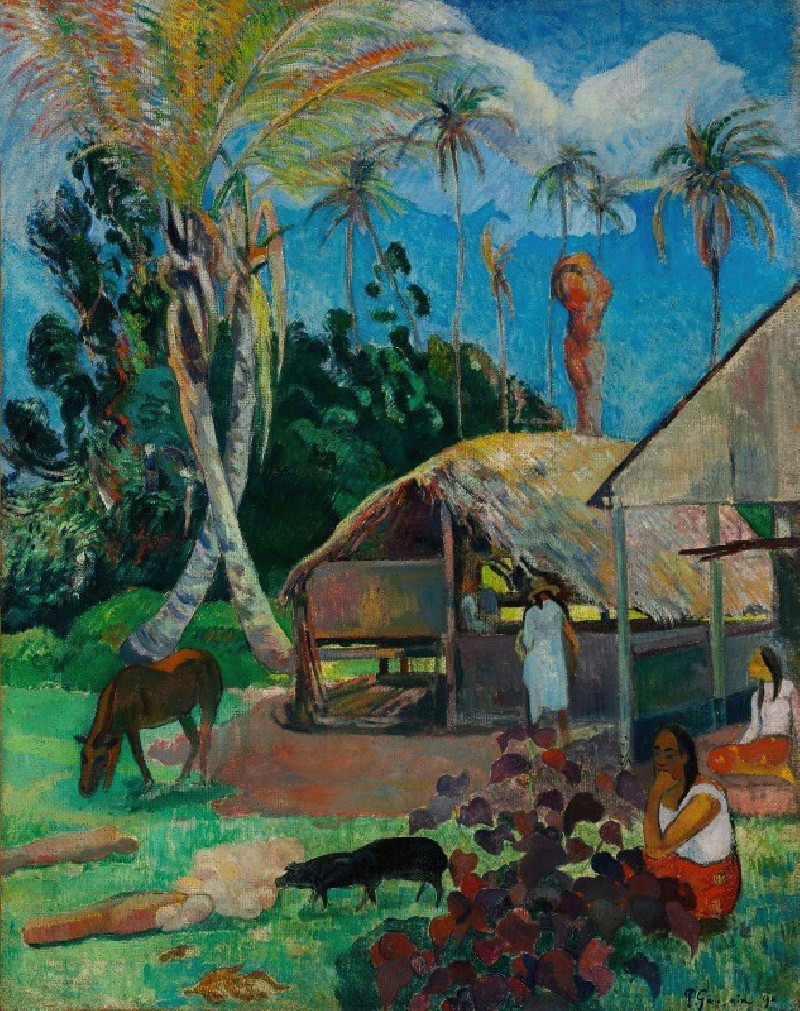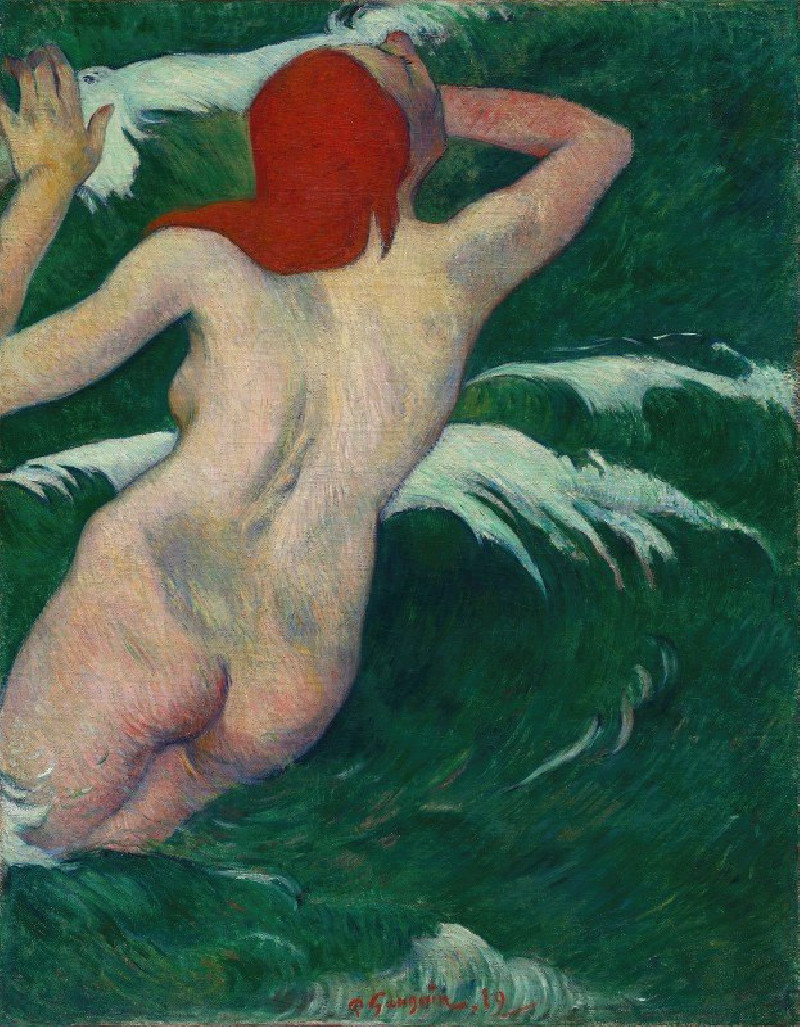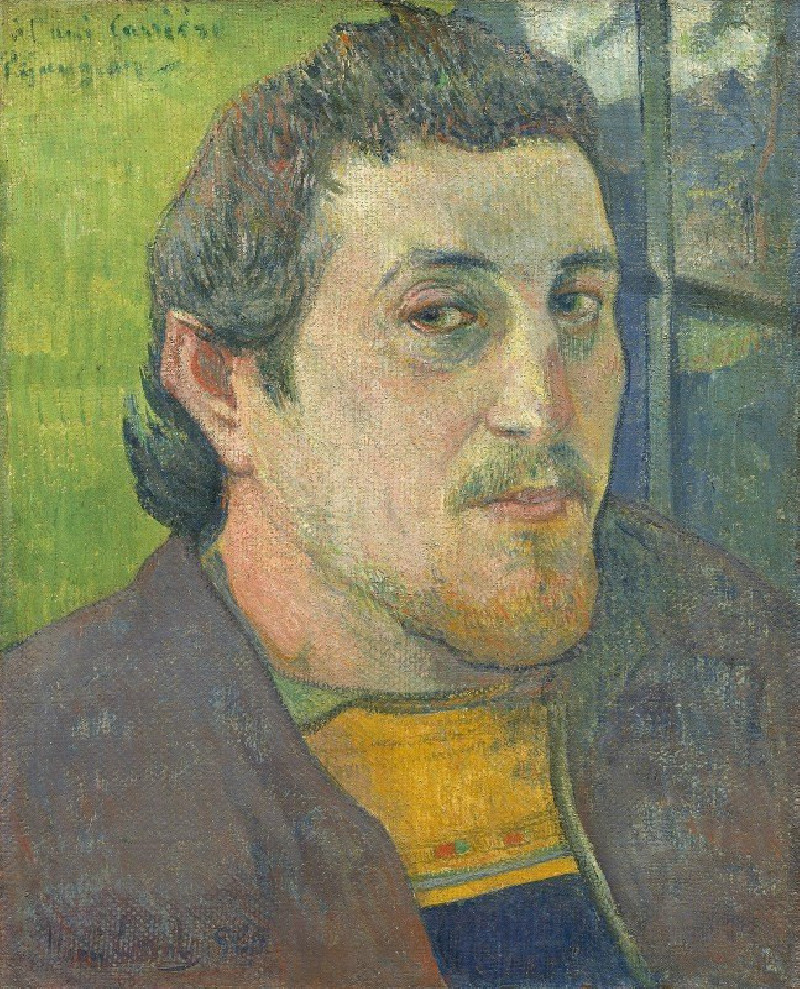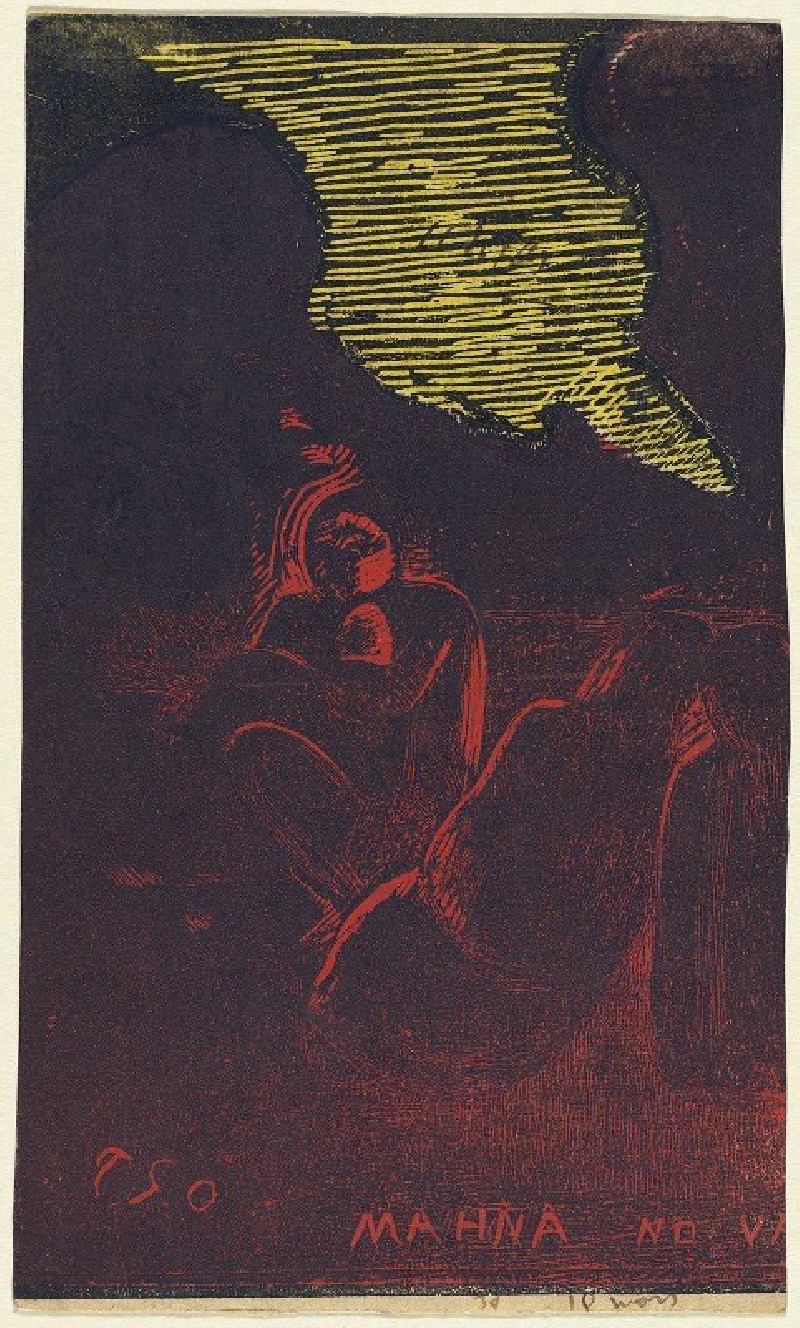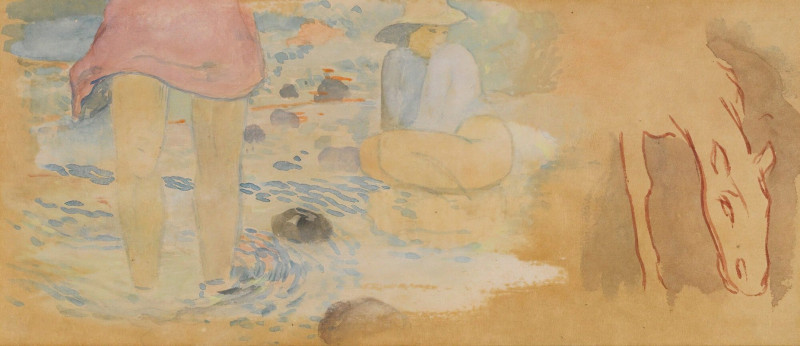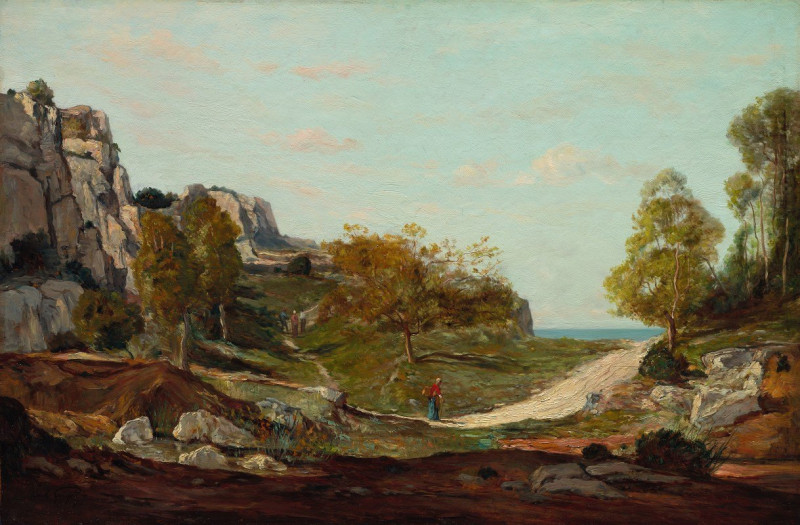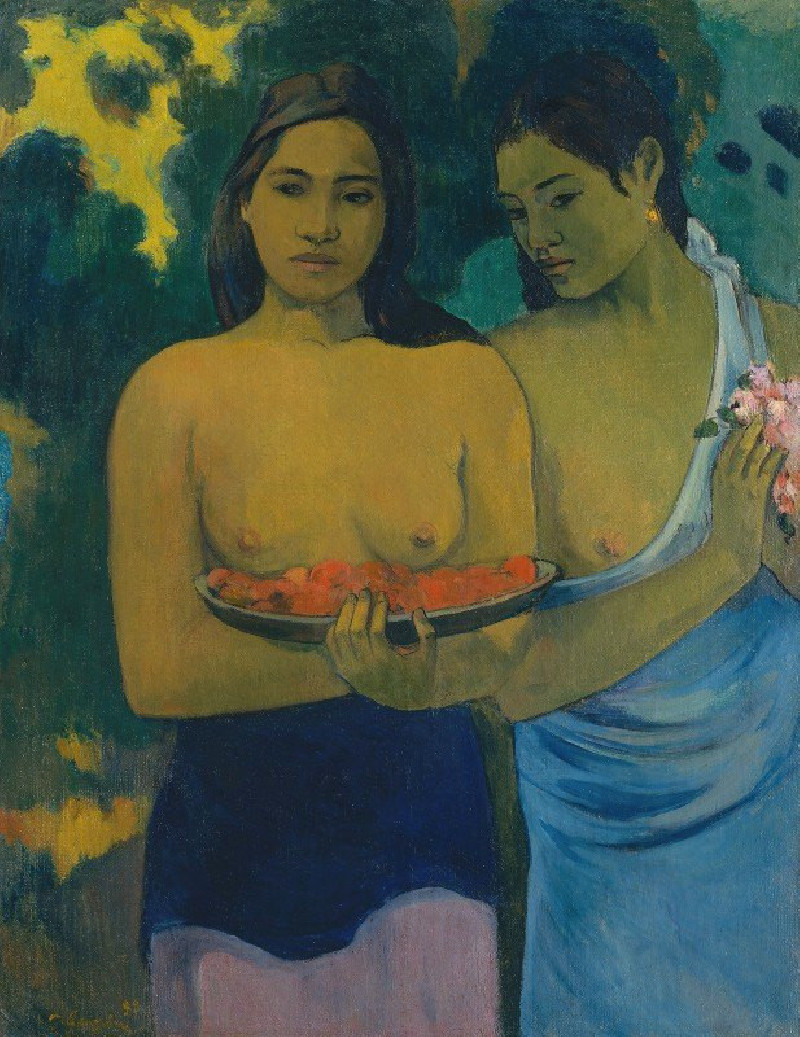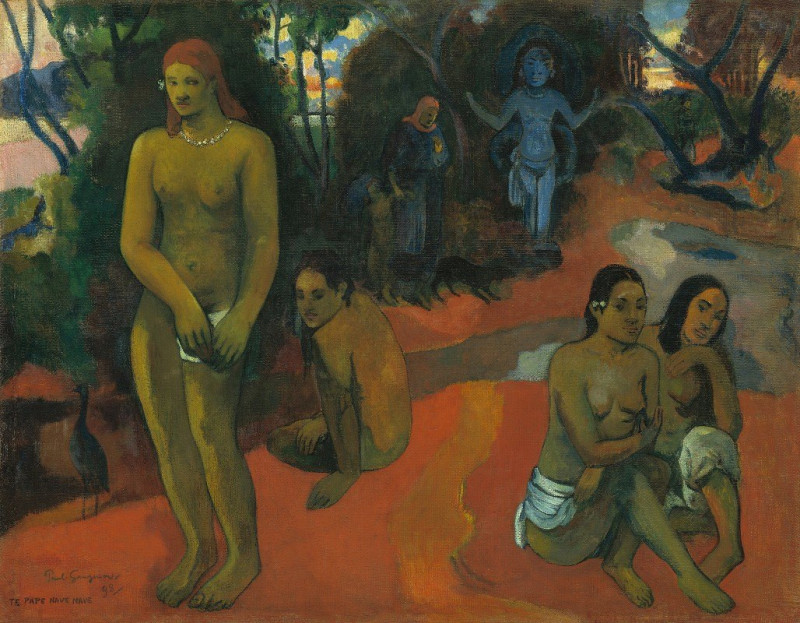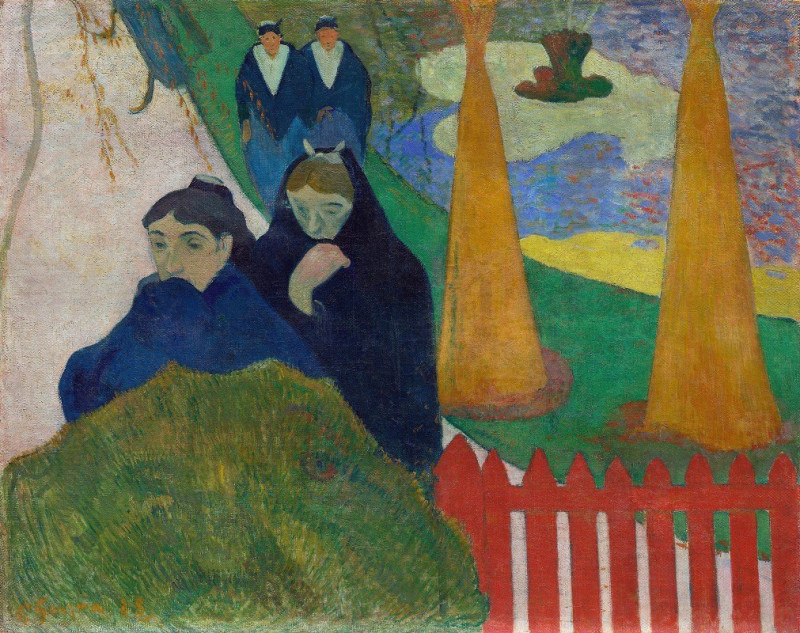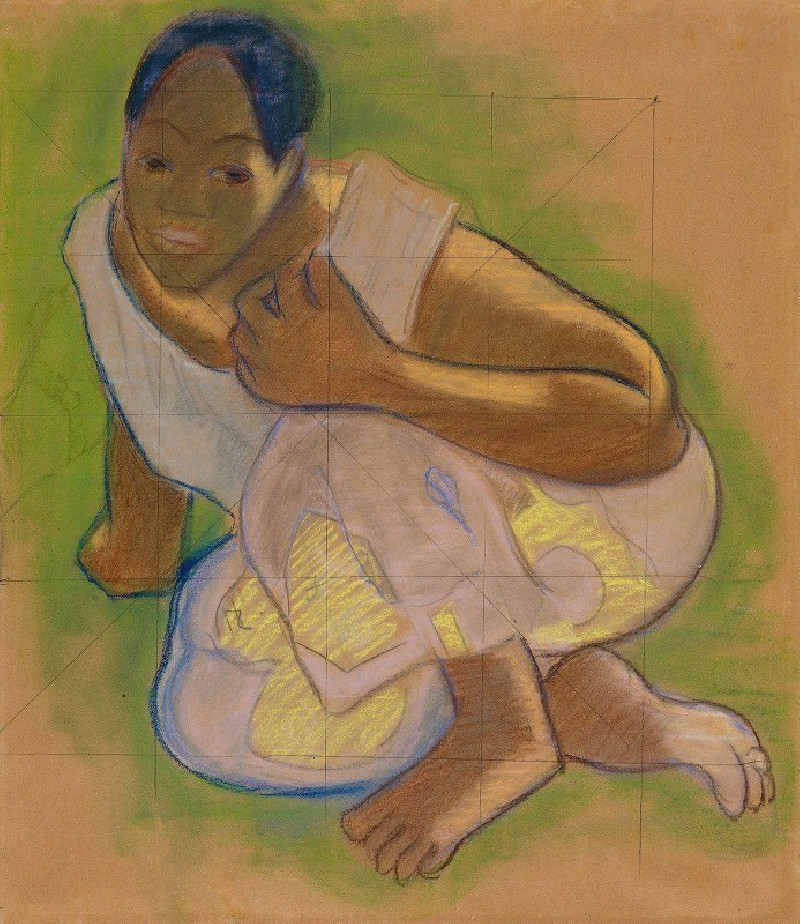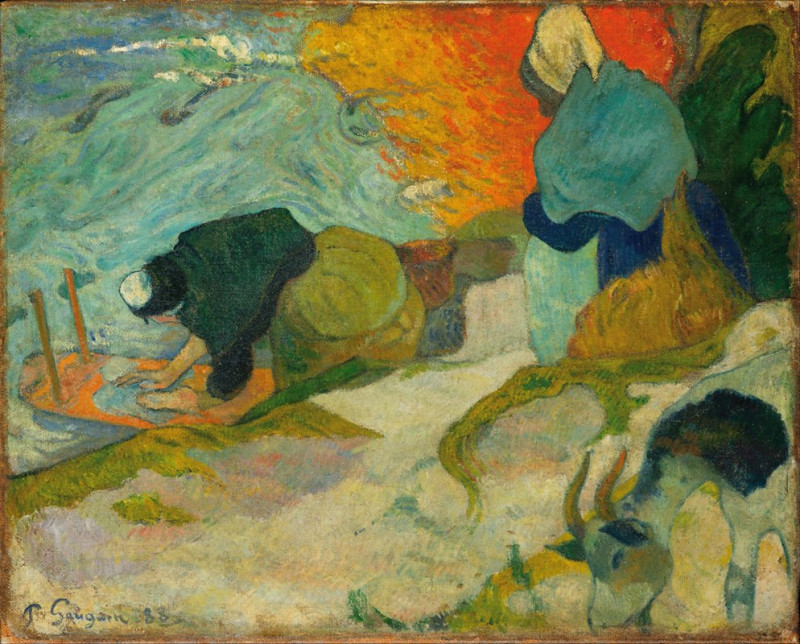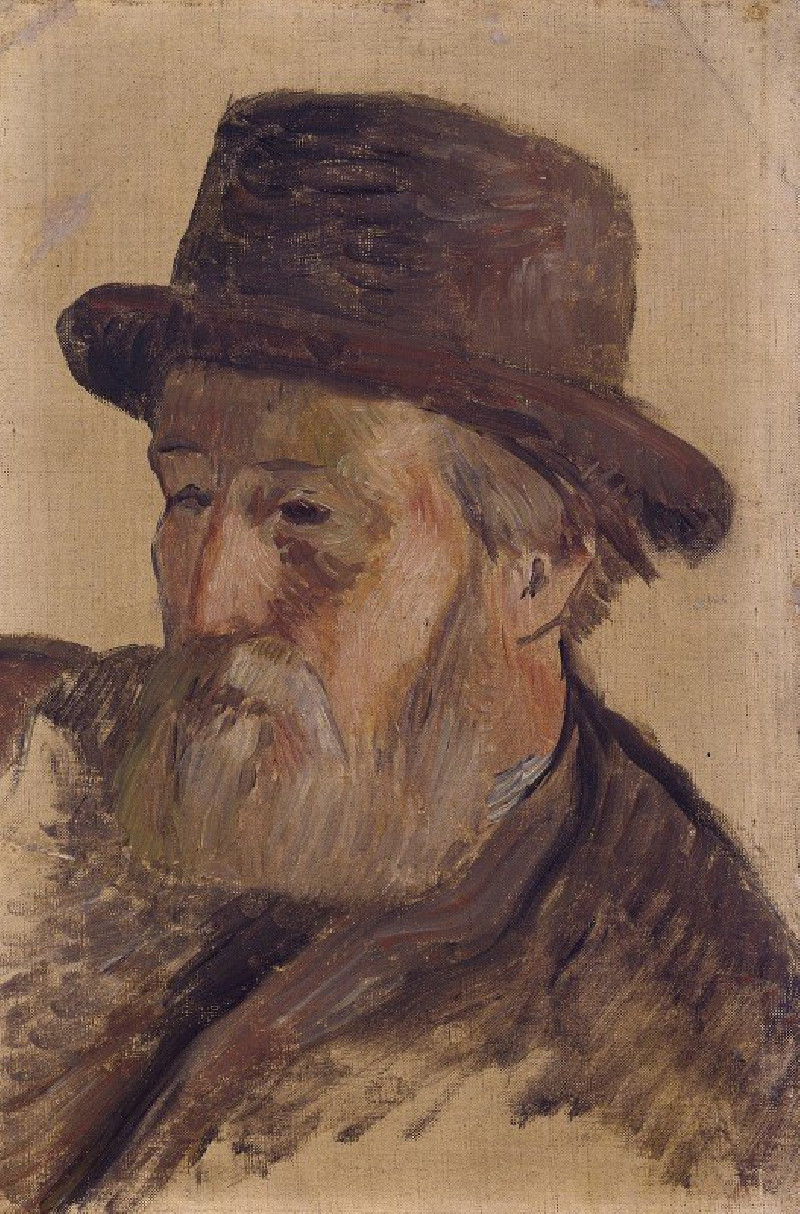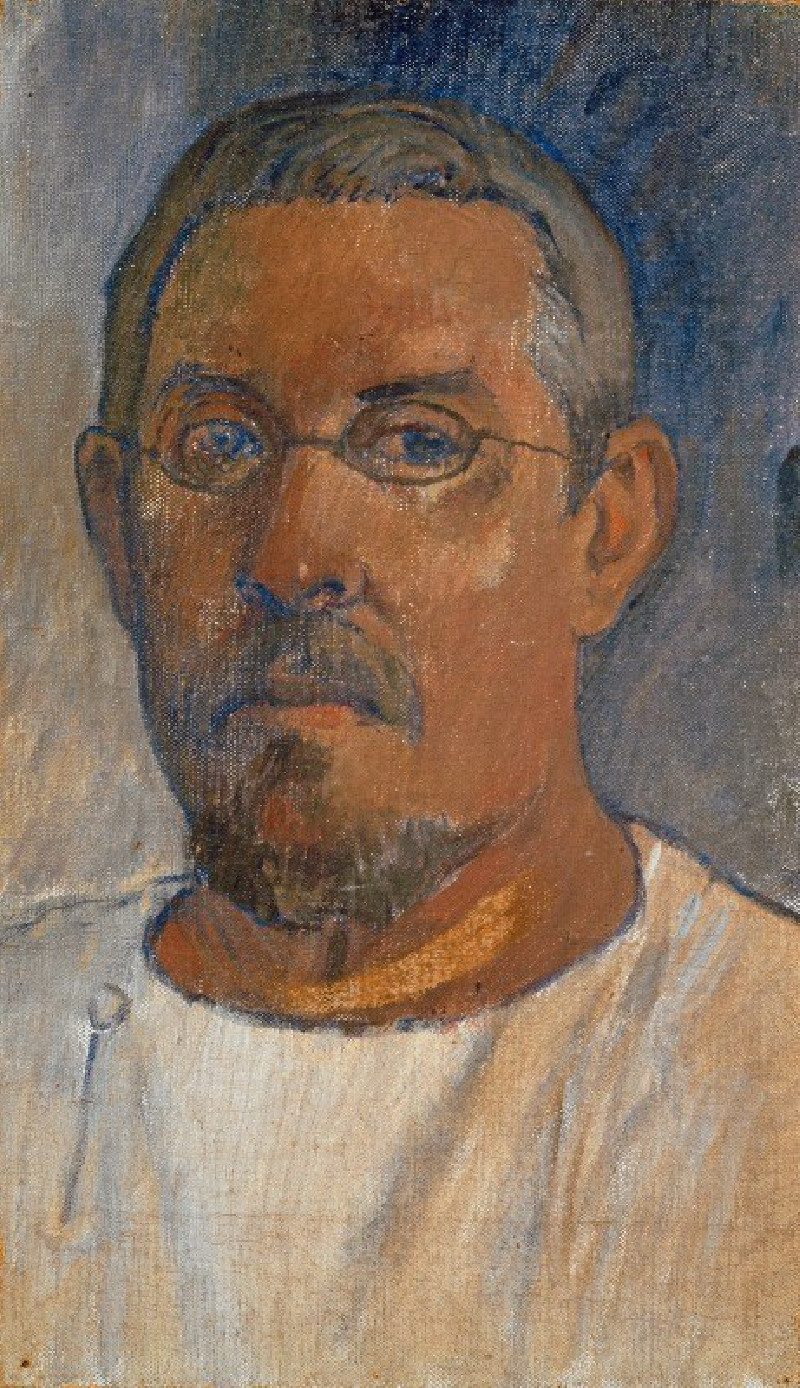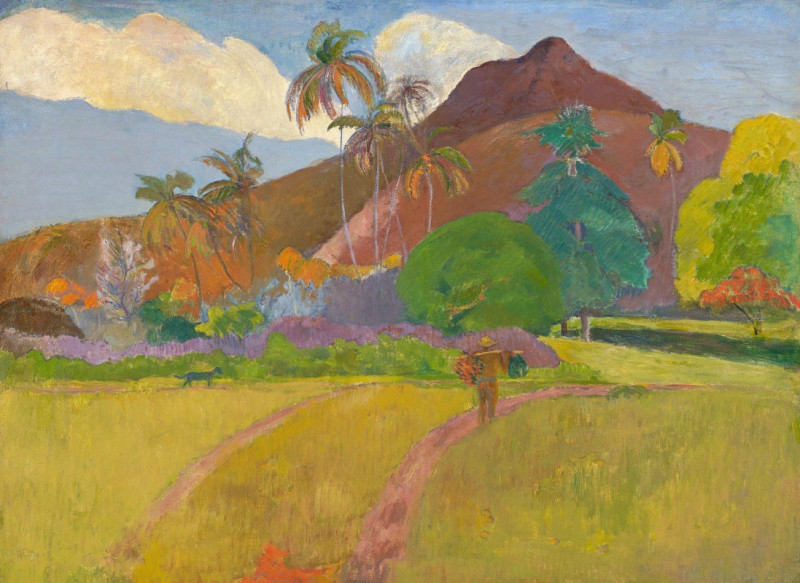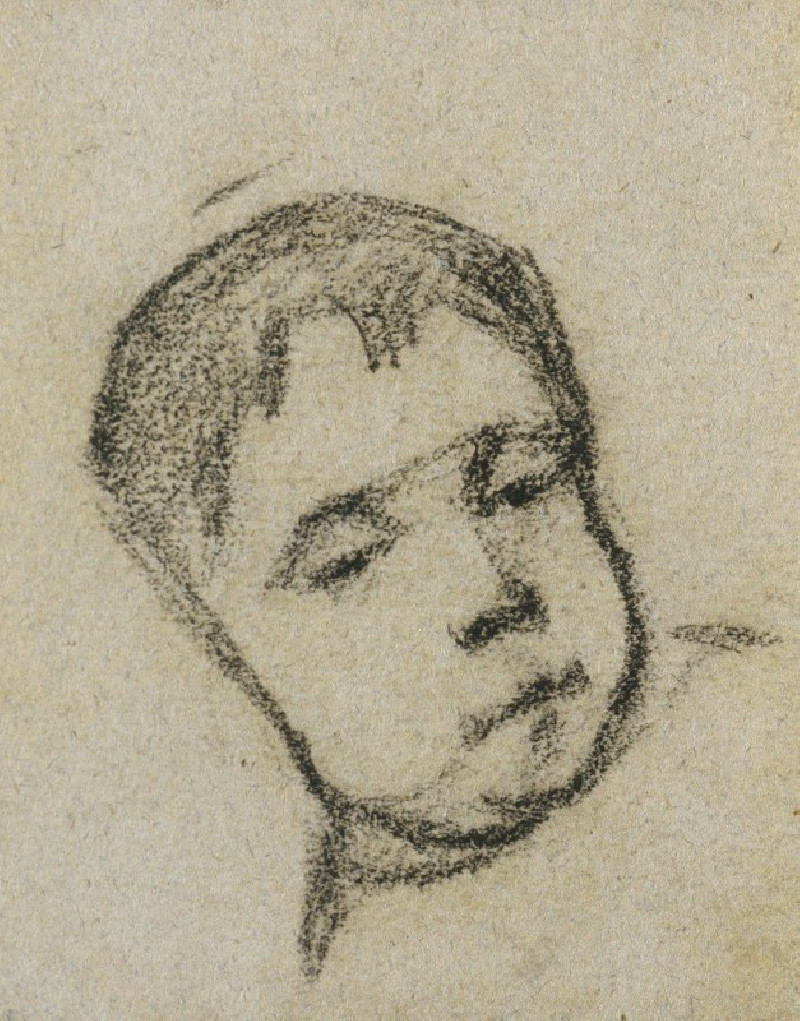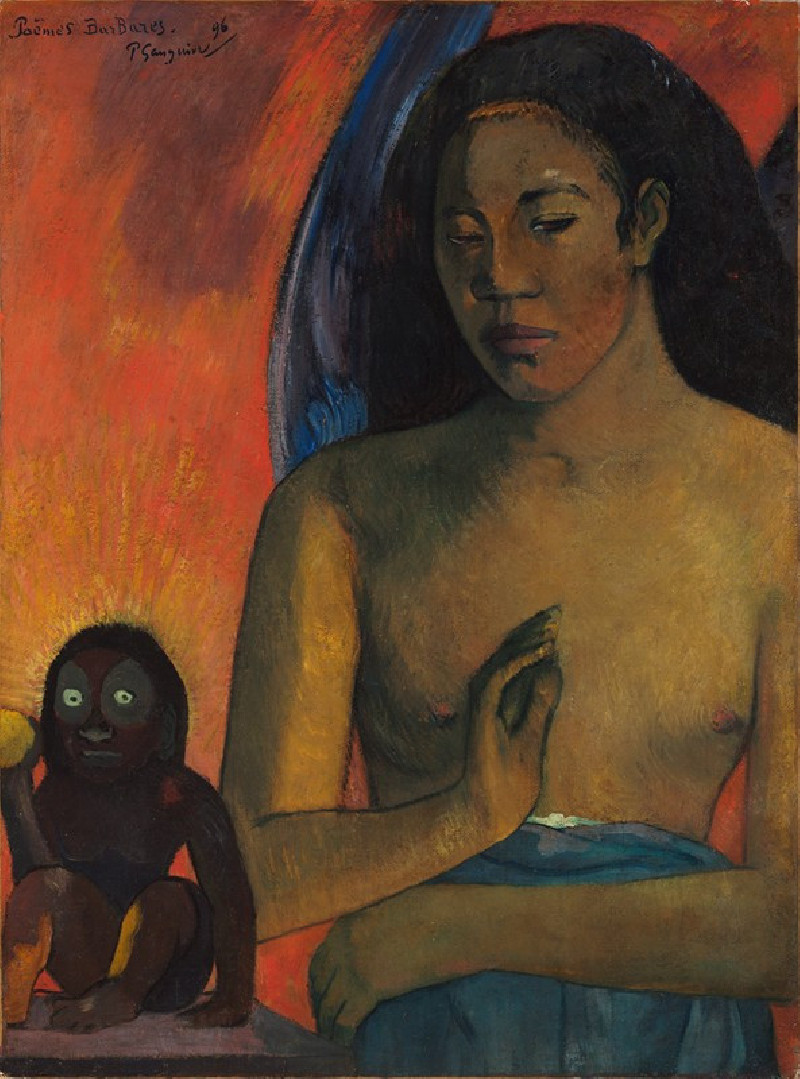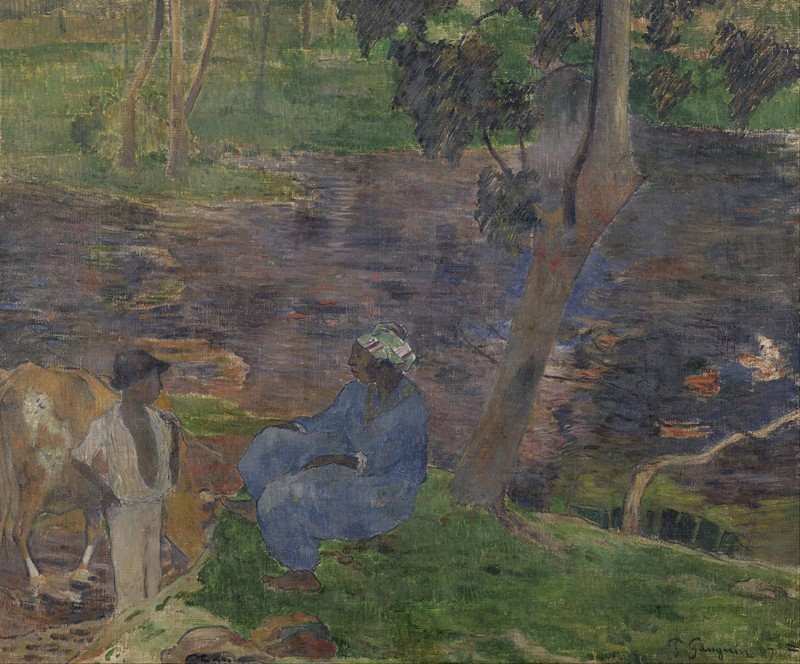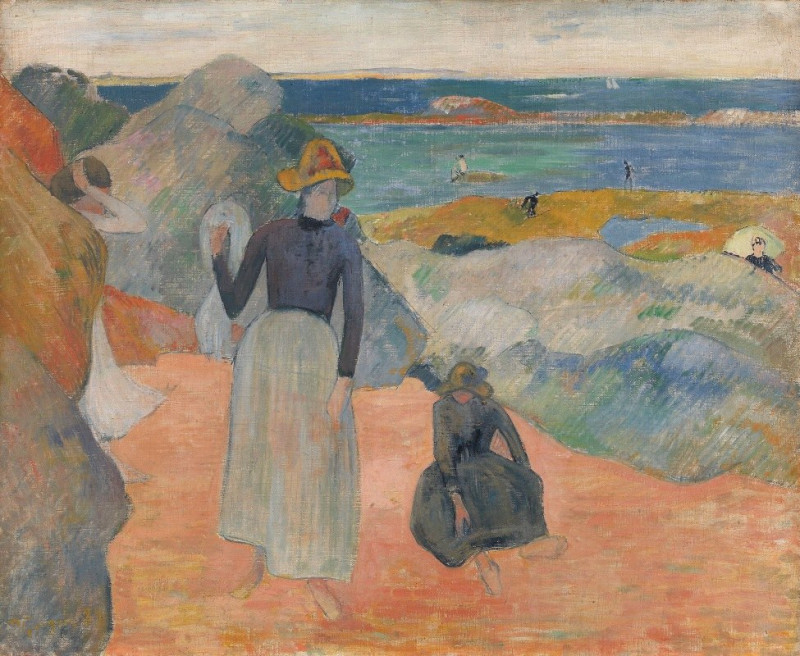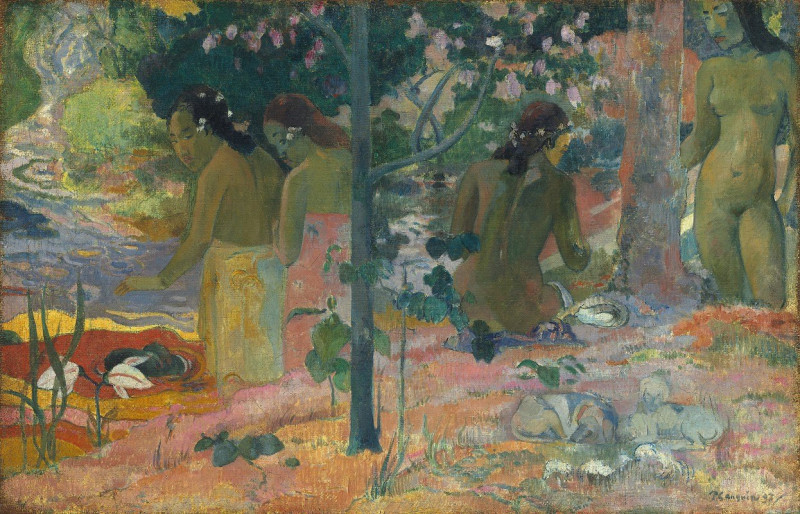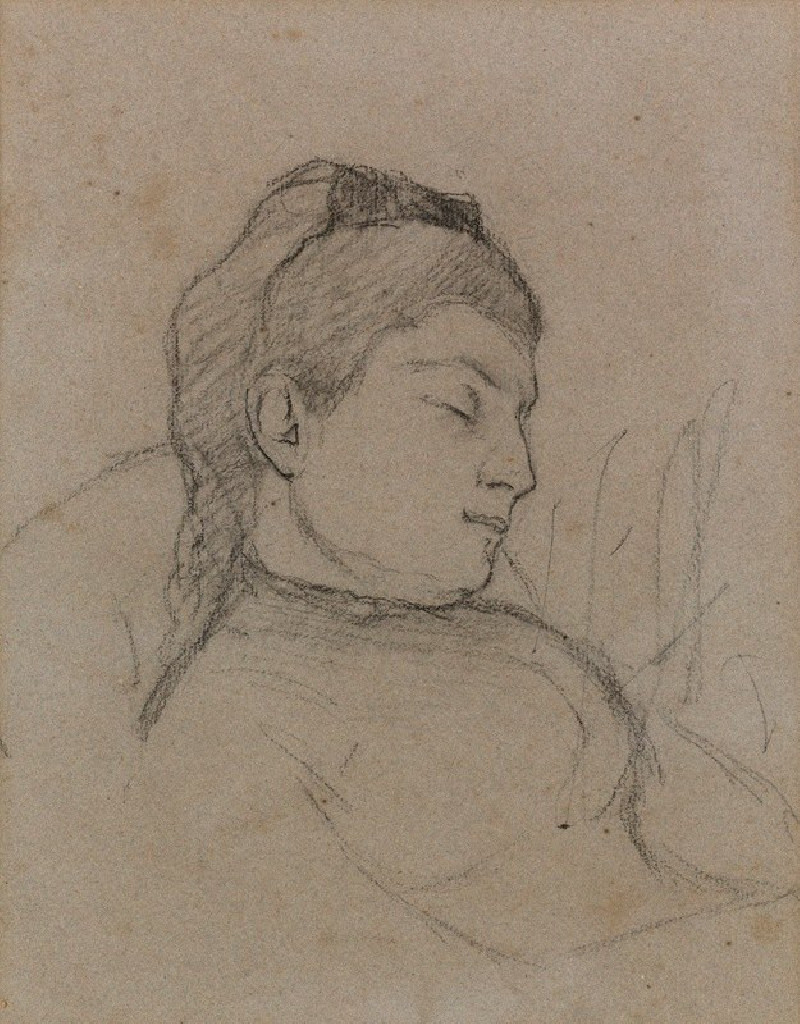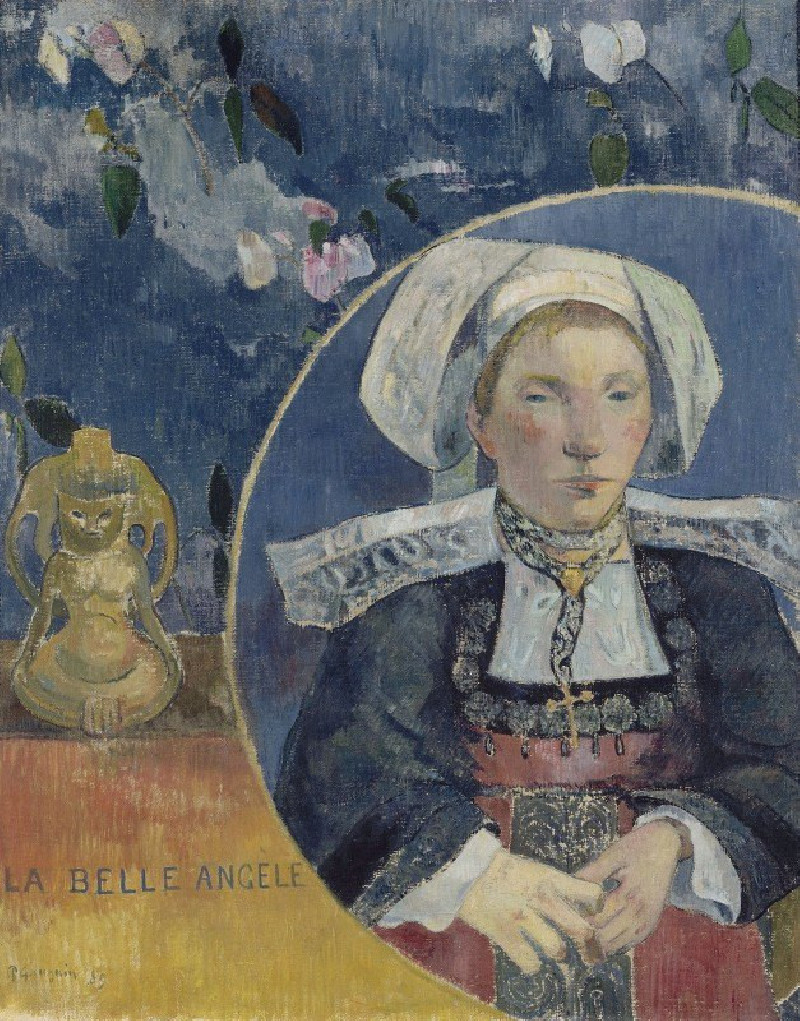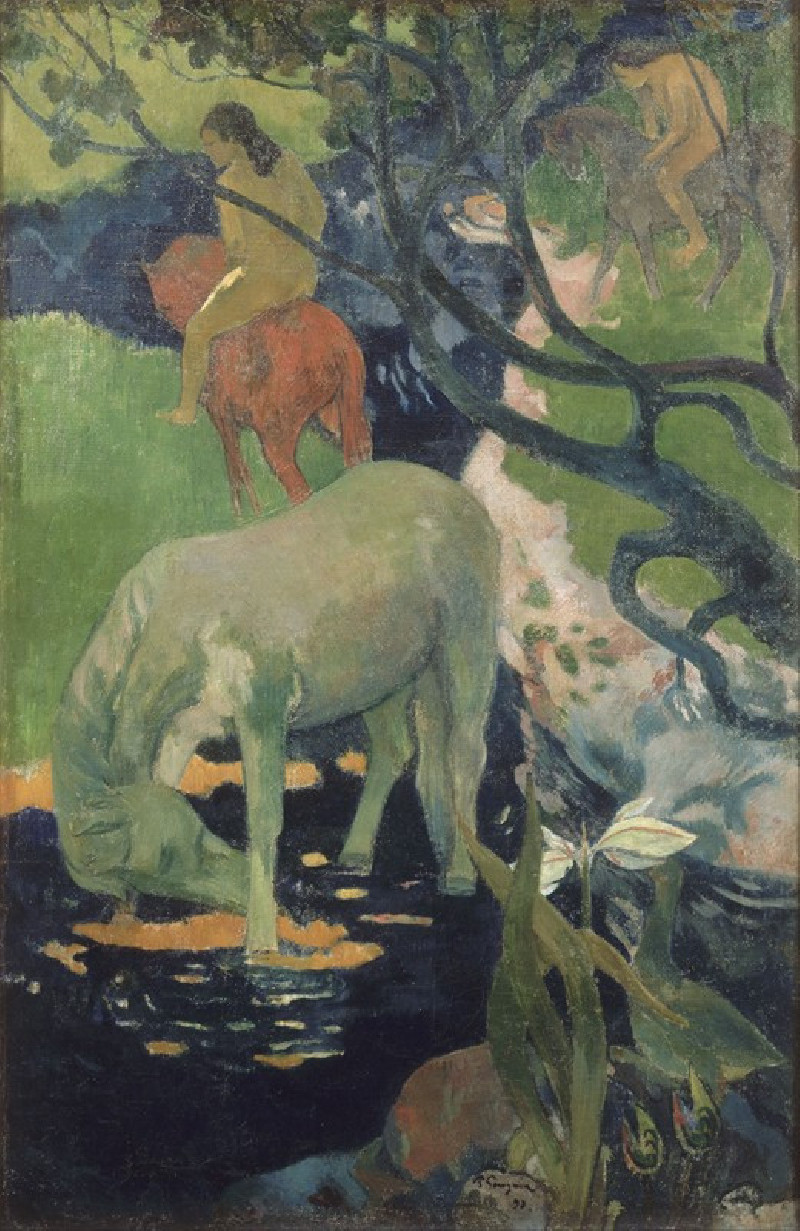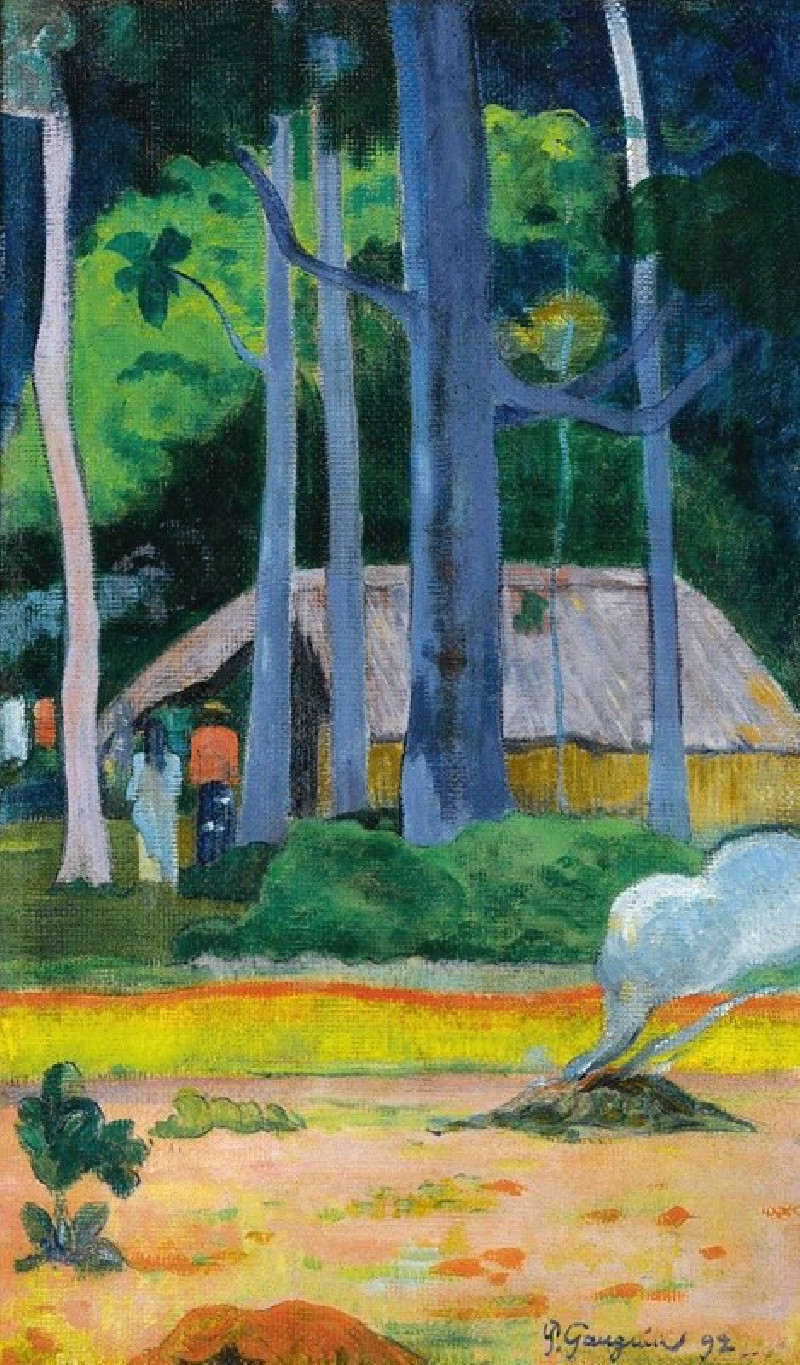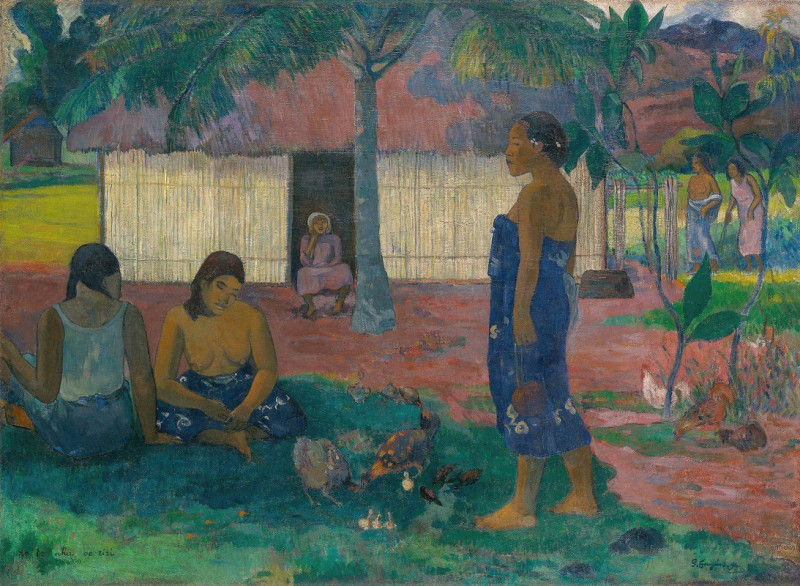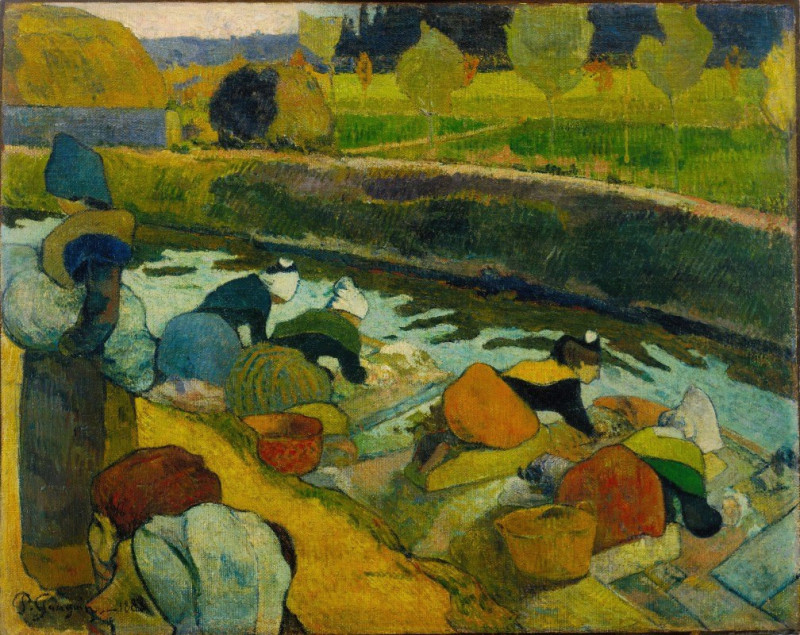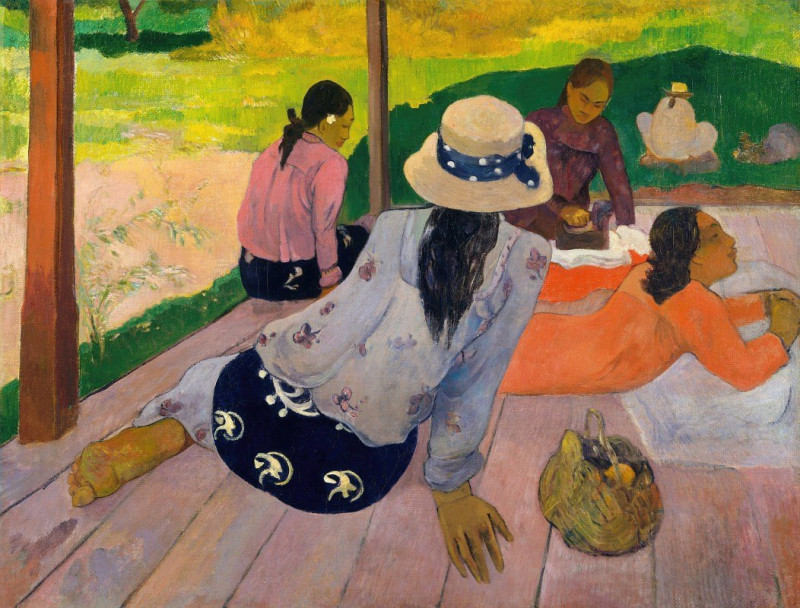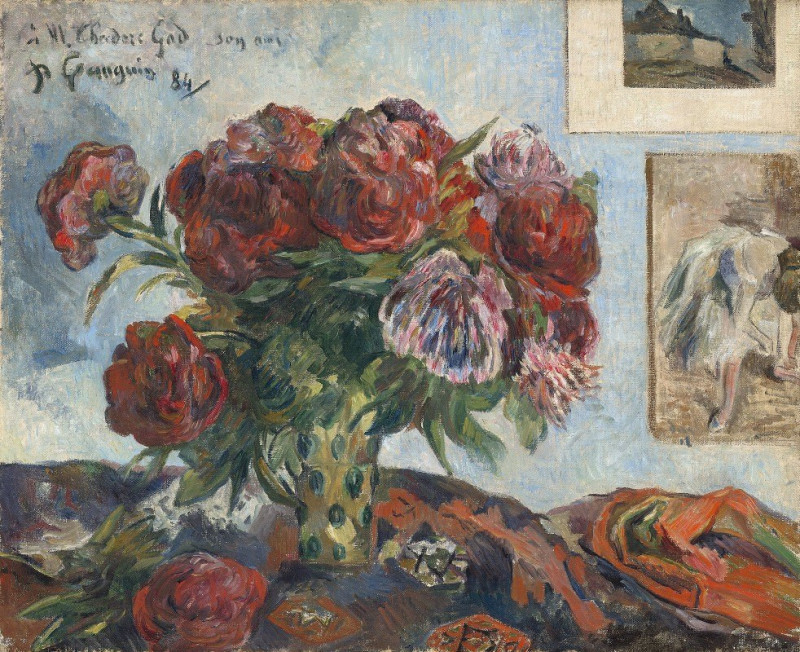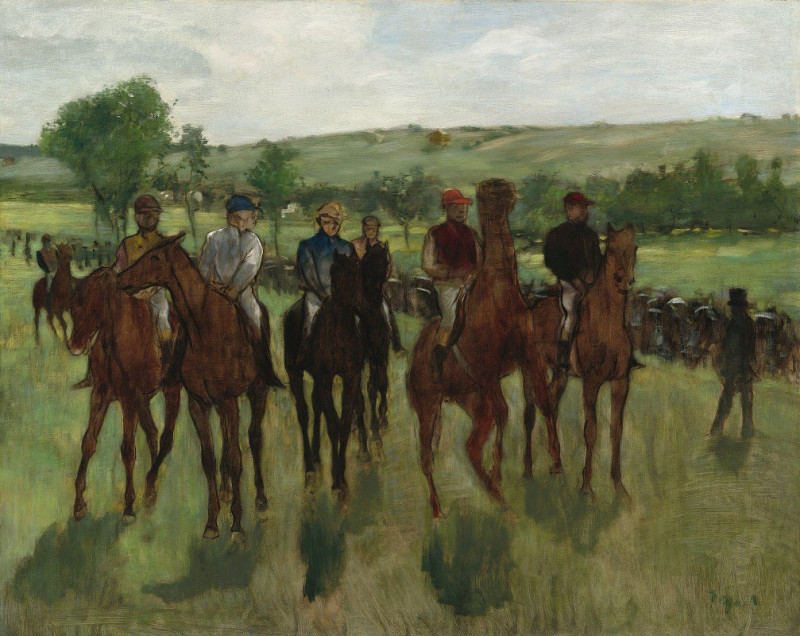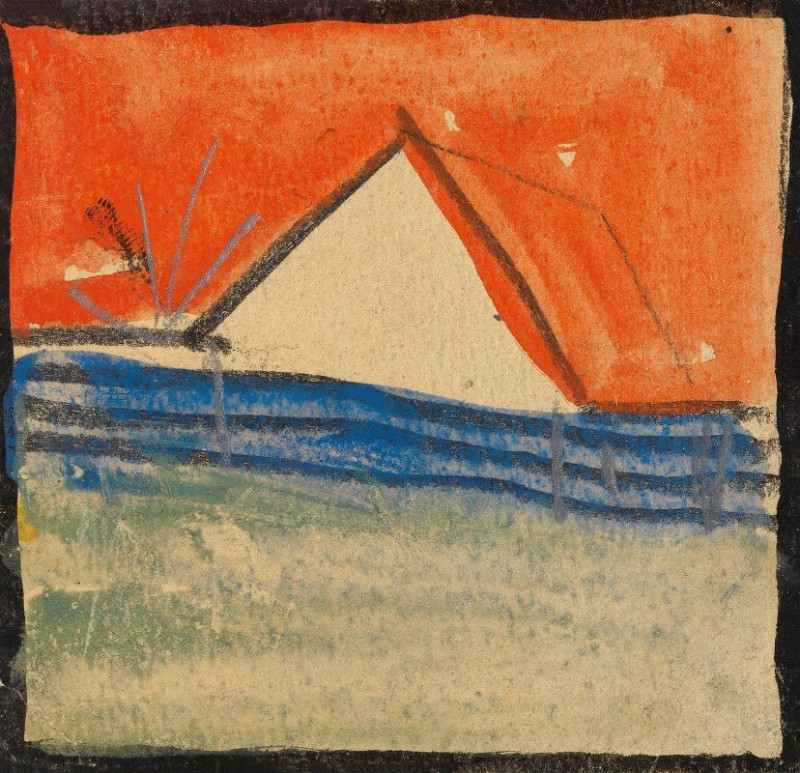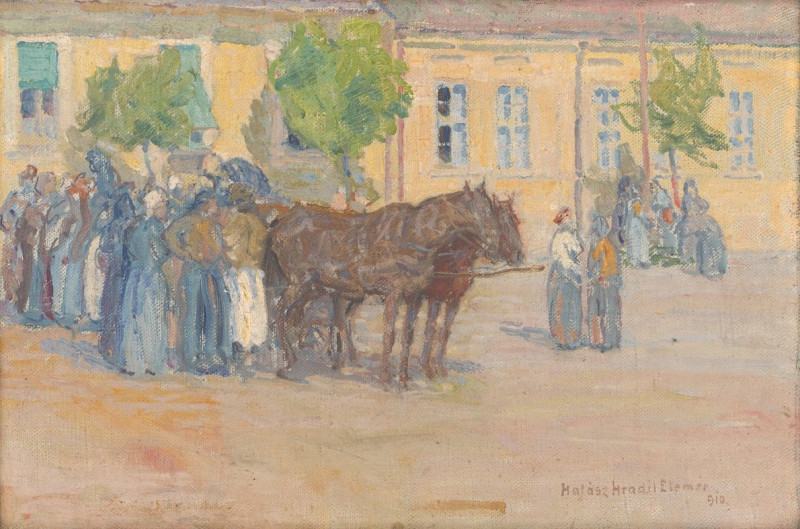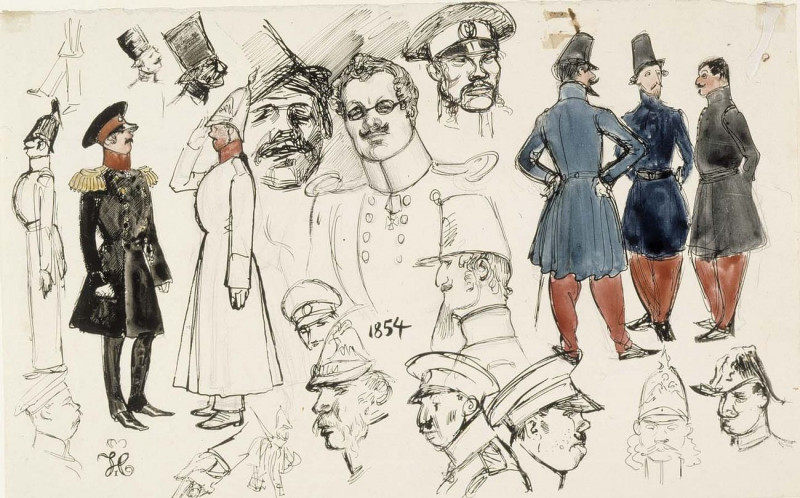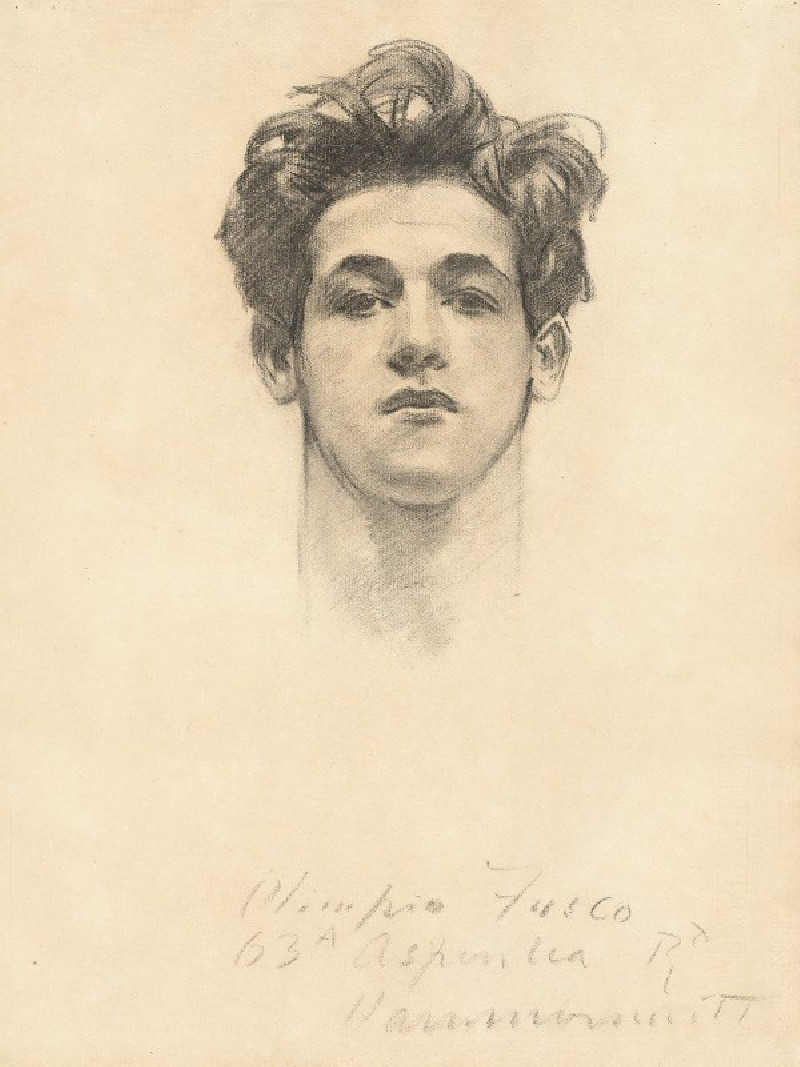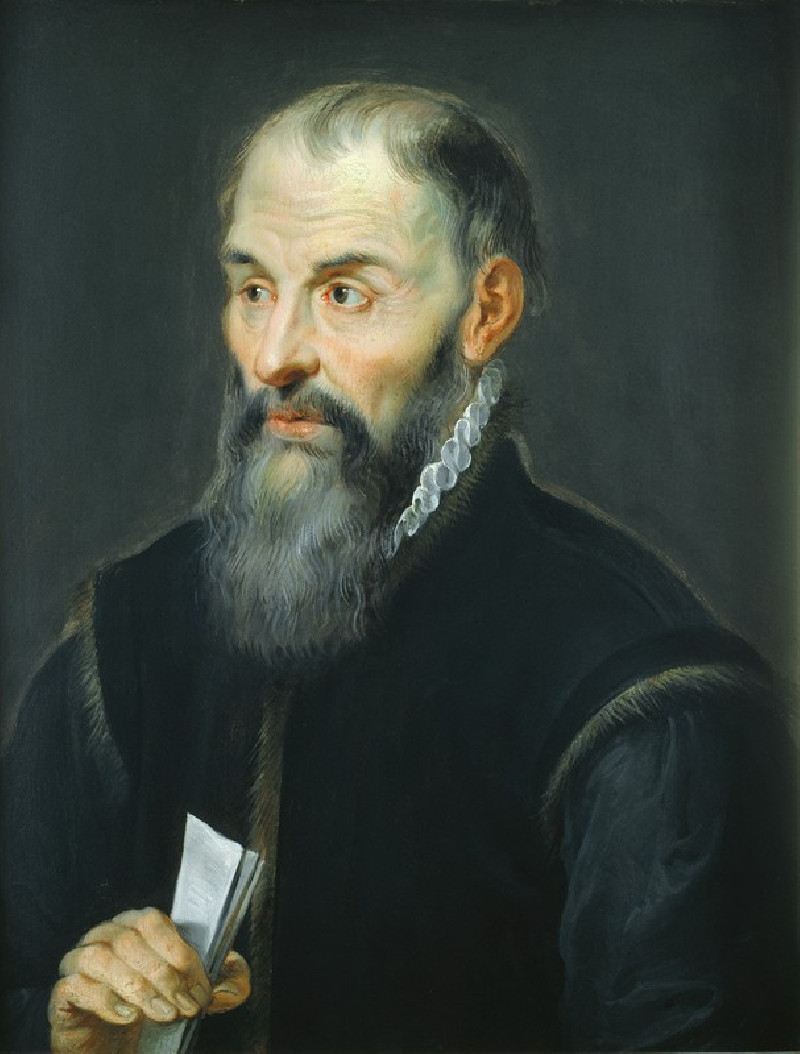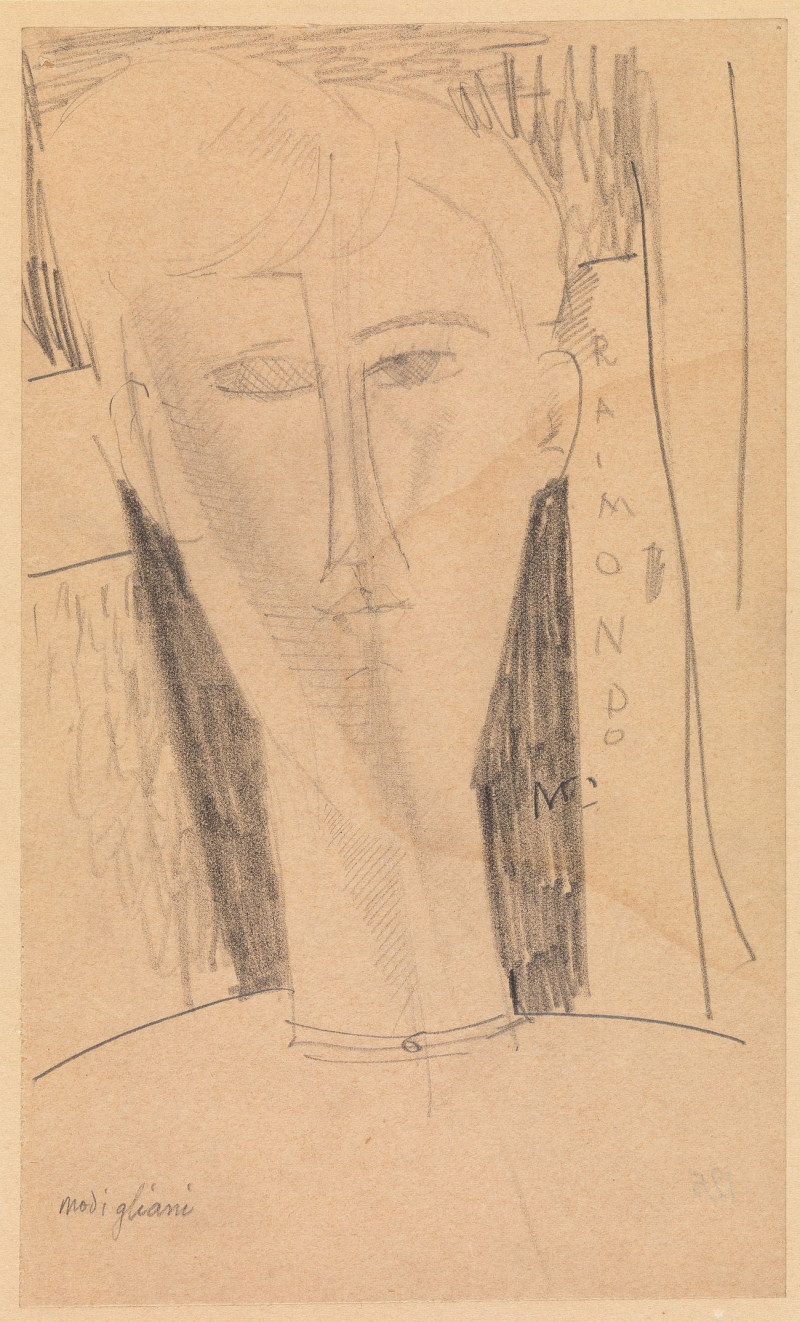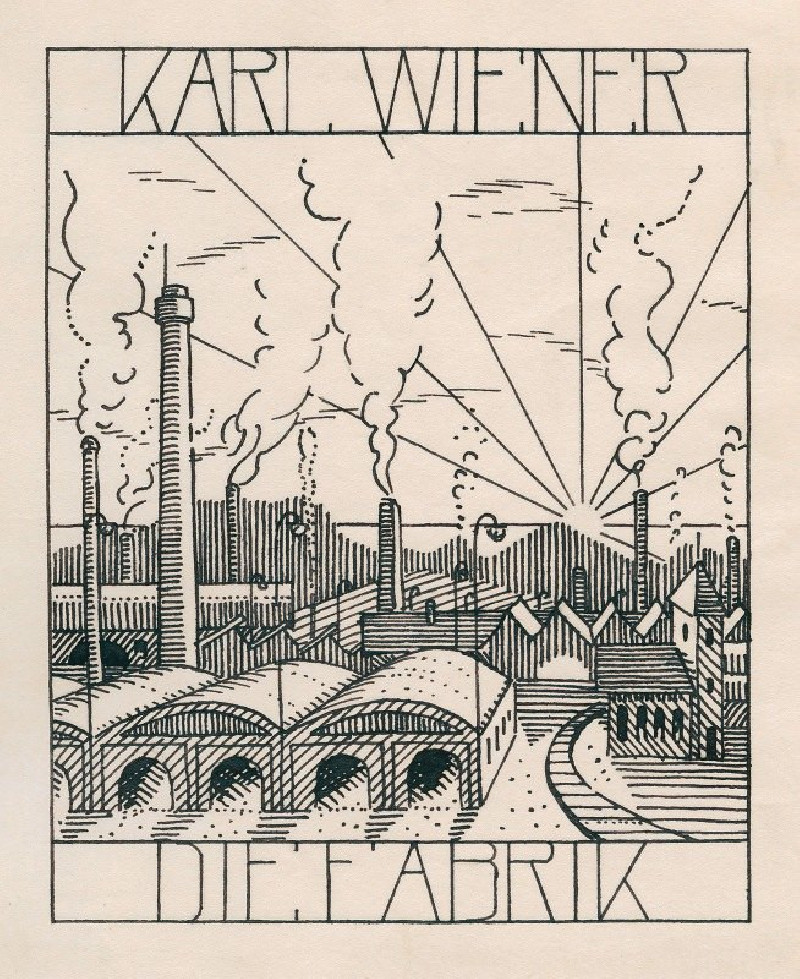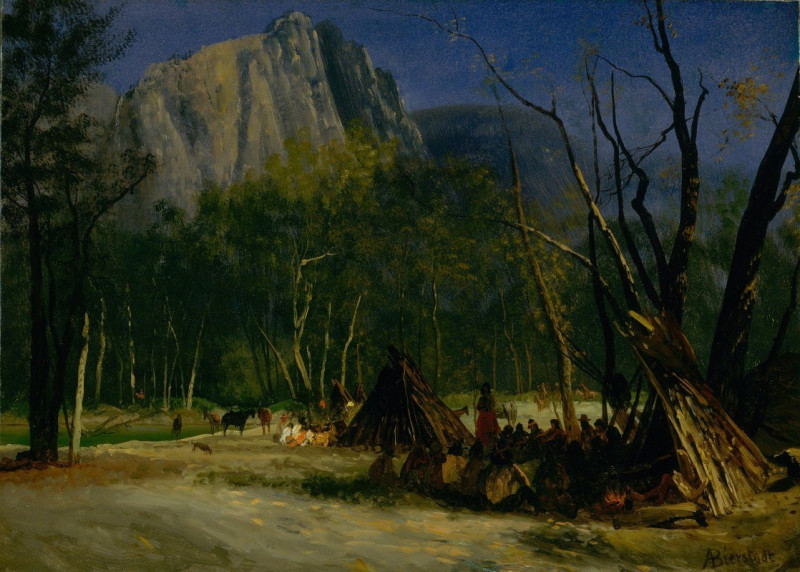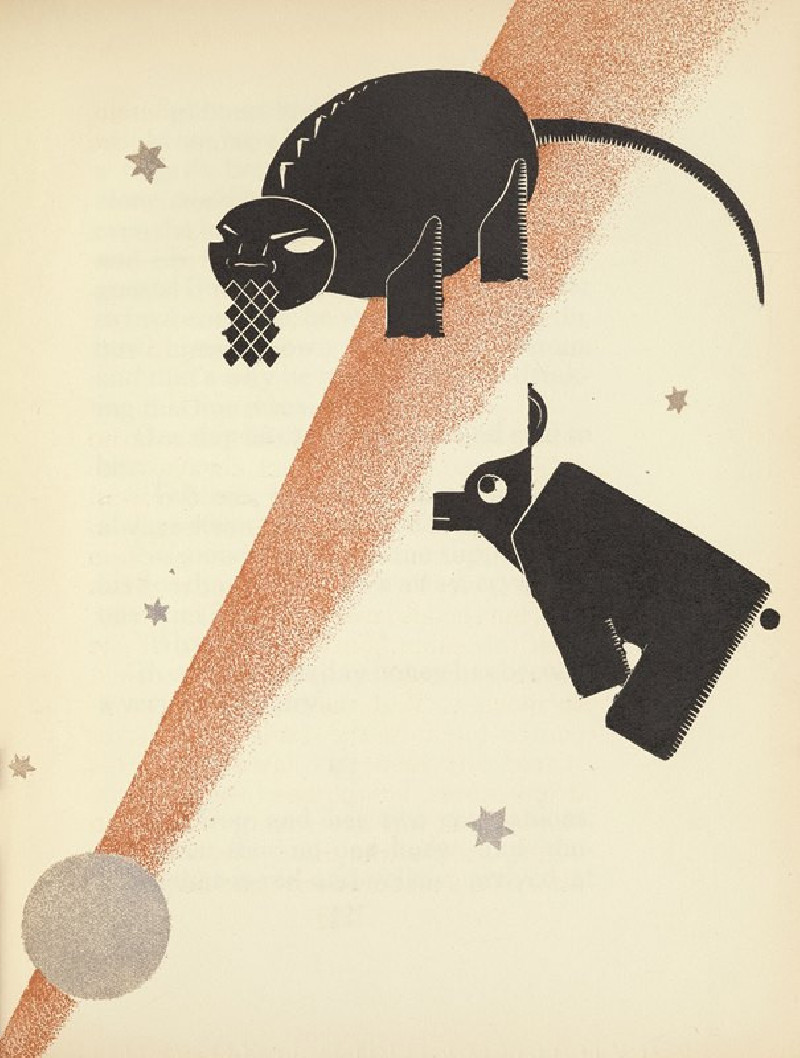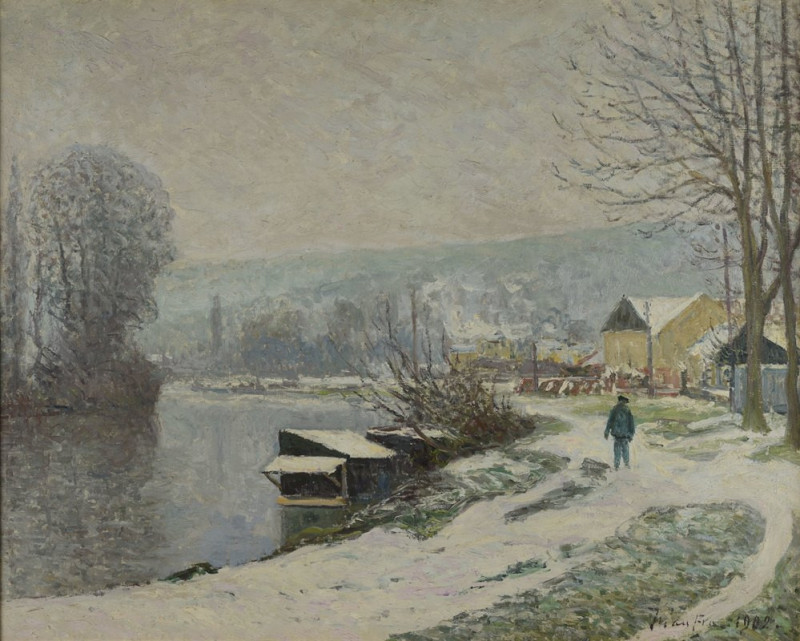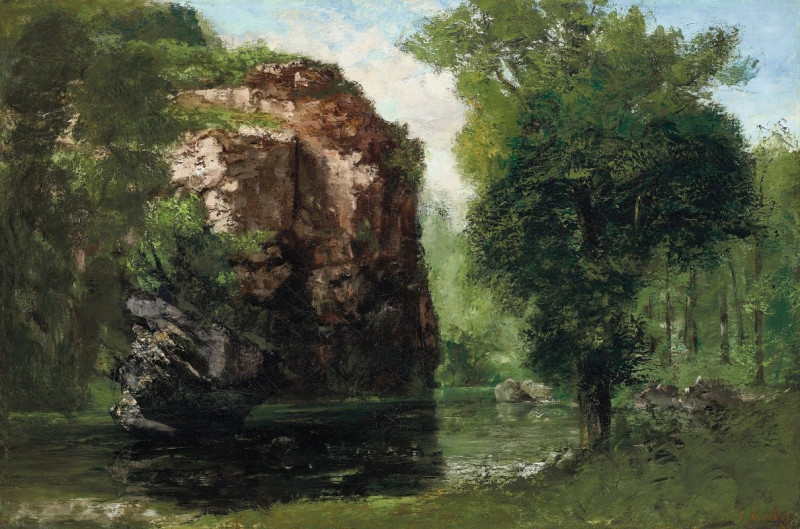Arii Matamoe (The Royal End) (1892)
Technique: Giclée quality print
Recommended by our customers
More about this artwork
"Arii Matamoe" or "The Royal End," created by Paul Gauguin in 1892, is a poignant exploration into the themes of life, death, and cultural change. This painting is set in Tahiti, capturing the morbid yet fascinating subject of a severed head, often interpreted as that of a Tahitian king, on a cushion surrounded by vibrant yet somber tropical symbols.The composition conveys a deep narrative. The head itself dominates the foreground, presented with a serene yet lifeless expression. Gauguin's signature use of bold, juxtaposing colors intensifies the stark realism of death with the vivid life of the flora—red and yellow flowers are positioned next to the cushion, symbolizing life and vitality in contrast to death's inevitability.In the background, we see a native Tahitian woman, perhaps a mourner, sitting wistfully behind the deceased, her posture reflecting sorrow and contemplation. This is set against a fiercely colorful depiction of the tropical environment, replete with expressive motifs and a dark, brooding palette in the upper sections. What is particularly striking is the stark contrast between the life suggested by the luscious, ceremonial backdrop, and the undeniable death presented at the forefront.Through "Arii Matamoe," Gauguin not only contemplates the finality of death but also comments on the cultural upheavals brought by colonialism. The blend of the native elements with Western artistic influences captures a poignant moment of cultural intersection, loss, and reflection, making "Arii Matamoe" not just a painting but a narrative of historical and emotional depth.
Delivery
Returns
Eugène Henri Paul Gauguin was a French Post-Impressionist artist. Unappreciated until after his death, Gauguin is now recognized for his experimental use of color and Synthetist style that were distinct from Impressionism. Toward the end of his life, he spent ten years in French Polynesia. The paintings from this time depict people or landscapes from that region.


